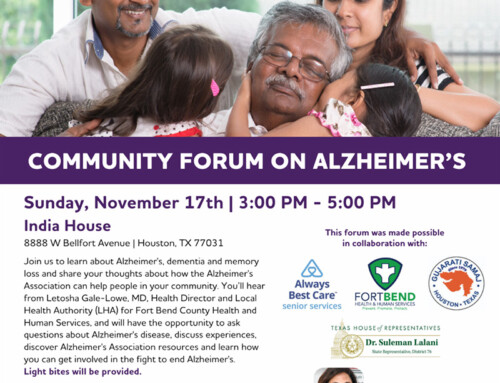Talk about an urban legend in every sense of both words.
Beginning in late 1982 and reaching a crescendo of panic and hysteria in the Spring of 1983,
elementary and middle-school playgrounds, classrooms, cafeterias from Alief all the way to Aldine were gripped with dread. Even the tough kids were scared, one former HISD pupil remembered decades later. Each and every child in pretty much every school in Harris County believed that each day at school might be their last — and not for reasons of expulsion or weather- or pandemic-induced school closure.
Instead, thousands upon thousands of Houston-area schoolkids feared that they would be murdered at school — and in those relatively innocent days, this was not the rational fear it all-too-sadly is today. Instead, they feared being set upon by a roving mob of vicious kids only slightly older, if at all, than they were.
And the name of this almost-entirely fictitious band of juvenile delinquent marauders?
The Smurfs.
That’s right the adorable little blue gnomes of the then-popular after-school cartoon. Per playground legend, their name had been commandeered by a gang of pitiless children who, purportedly over the death of their beloved leader, the one they called Papa Smurf, were all hopped up on Smurfberries and hell-bent on wreaking random vengeance on an entire city.
The gang’s preposterous name only enhanced their sinister image — after all, per the “Boy Named Sue” principle, members of a gang self-confident enough to brand themselves after cuddly Belgian cartoon characters just had to be absolute psychos.
And like we said, this was not confined to one school or even sections of Houston — it was everywhere, but only in Houston. Kids in San Antonio, Austin, Dallas — they probably would have busted a gut laughing Houstonian Smurfophobia.
The Smurfs were almost never schoolmates of any of the kids who were scared of them. They were always either enrolled in (or expelled from) schools one or two neighborhoods away. They were a faceless, anonymous, pitiless “other.” If you went to Holub Middle School, the Smurfs attended Alief Middle; if you were at Alief, they were from Holub, or maybe they were from schools in nearby neighborhoods like Sharpstown, Missouri City or Fondren Southwest .
The hysteria reached such a fever pitch, Newsweek magazine, then a leading national print media source, ran with the story:
It started out innocently enough: in January [1983] a Houston TV station reported that several juveniles believed to be called “the Smurfs” had been arrested for a series of petty crimes. Before long though, rumors were sweeping elementary and junior-high schools that a vicious gang was terrorizing youngsters and murdering principals all across the city. The marauding Smurfs were variously reported to be wearing blue body paint or black jackets, carrying knives or machine guns. Some students said kids wearing sky-blue clothes were in danger; others insisted that sky-blue clothing would ward off attack. At the Aldine school district, the Smurfs were said to be hiding out in restrooms. “Some of our sixth graders refused to go to the bathroom,” said district spokesperson Judy Williams. Attendance in some schools dropped. Frantic parents deluged administrators with calls. “One of my friends was so scared she moved back to Philadelphia,” reported Janie, a seventh grader at Fondren Middle School.
Recently Houston police charged about 40 youngsters and 7 adults with Smurf-related goings-on — mostly burglary and petty theft — but wearily insisted that the Smurf gang had never been in the Houston schools. “Kids desperately wanted to believe [that the Smurfs were there] — they wanted some excitement,” said Franklin Turner, principal at the Johnston Middle School, who, according to the rumors, had been murdered by the Smurfs. At the Welch Middle School, meanwhile, Principal Bill Morgan decided to fight fantasy with fantasy. Morgan announced over the school’s public-address system that Garfield the cat and the Greatest American Hero were on their way to protect the students.
Bear in mind this was a decade before the Internet, so these rumors spread solely by word of mouth or over the phone and completely out of sight or earshot of any adult. Kids from rival schools would meet on playgrounds or talk to their cousins from across town on the phone and the stories grew ever more elaborate and terrifying. (The parlor game of “Telephone” comes by that name for a reason.)
You can easily imagine conversations like these:
Kid 1: I hear the Smurfs hide out in bathrooms.
Kid 2: No, they only attack at recess.
Kid 3: No you dipstick, they always come at lunch.
Kid 4: Unh-uh, stupid! they get you on your way home!
Kid 5: Yeah! And they chop your head off!
(Pause)
Kid 1: All I know is, I am writing a G on my hand.
Kid 2: Why?
Kid 1: Because it stands for Gargamel, dummy. That’s like you when you show a crucifix to a vampire!
Kid 3: What-ev-errr.
Troy Davis, a student from Lakewood Elementary in the North Forest ISD, recalled that his school carnival was a “ghost town because of rumored Smurf attack.” The Smurfs really had it in for Lakewood, Davis reported, because years earlier, it was whispered, a Lakewood teacher had killed a Smurf, and so out of fears of a sky-blue Game of Thrones-style “red wedding” of an event, kids, teachers and parents alike all stayed home, and many a sno-cone went unsold that day.
Some parents were so alarmed they kept their children home. Not those of Spring Branch ISD’s Kimberly Tadross Hyndman, then a third grader: “I was so scared to go to the bathrooms,” she recalled. “I went home crying to my mom about it and she just burst out laughing… not a drop of empathy for my terror!”
Some even said that the Smurfs were not even a gang of humans, but actual Smurfs brought to life and imbued with spirits of pure unadulterated malice. These were the ones said to be lurking in Aldine ISD toilet bowls. (After all, TV Smurfs were uniformly only “three apples high.”)
Concerned parents deluged Mayor Kathy Whitmire’s office, and she sent down orders to HPD to form a three-man Smurf Patrol with orders to track down and eradicate the blue demons. In late March, the squad’s commander reported that he was disbanding the unit. The reason — there was no basis whatsoever to the widespread rumors of a continuing Smurf-related menace to the children or educators of the City of Houston.
Nor, per the Associated Press, was there ever one in any meaningful sense. HPD Sgt. J.R. Wiederhold said the rumors started in December of 1982 when a group of hooligans from Hartman Junior High near Hobby Airport were apprehended and accused of such typical schoolyard offenses as swiping lunch money and stealing watches and jackets from other students and shoplifting from nearby stores. That was it. One and only one of the arrestees apparently told a cop he was the leader of a gang called the Smurfs, but, Wiederhold emphasized, he was the only one who claimed that peculiar gang affiliation.
And yet rumors persisted. This writer returned to Houston in 1984 and enrolled at Strake Jesuit College Preparatory, and several of my classmates from Missouri City assured me that not only were the Smurfs based at Willowridge High School, but that they knew Papa Smurf himself, and the rumors of his demise were greatly exaggerated, they insisted. Many years later another version of the Mo City Smurfs popped up on a local message board and seemed to corroborate what I had heard decades before.
Houston Architecture Info Forum poster “ClubQBall” claimed to be a graduate of Missouri City Junior High and Willowridge during the heyday of the Smurfs — roughly, in his remembrance, from 1981 to 1987.
He wrote:
Yes, the Smurfs were out of Willowridge; matter of fact, I had several childhood friends back then that were part of the Smurfs. However, all the hysteria and hype was just exactly that – hysteria and hype. Yeah, it was a gang; no doubt about that, but the Smurfs weren’t the killers all the rumors made them out to be.
Instead, he continued, they were kids ranging in age from 12-16 who roved Missouri City, the Hiram Clarke / 5 Corners area, and occasionally into Meyerland. As many of them had family ties or had grown up in Third Ward, Fourth Ward or Fifth Ward, they would also venture into those historic areas, committing petty crimes wherever they went.
Per his account, one might surmise that the Smurfs did not choose their own name but rather had it bestowed upon them. It was around that time that Houston’s economy was tanking due to the Oil Bust, with crime following in its wake. Families were falling apart under the strain and into the void came a Fort Bend chapter of LA’s Crips street gang whose color, of course, is blue. Attracted by the false glamor of the gangster life, Fort Bend County youngsters began emulating them, right down to wearing blue colors, perhaps earning them that affectionate but demeaning name from the “big leaguers.”
Back to ClubQBall’s account:
Crack, prostitution, petty thievery, and gang violence were just starting to become prevalent out in Ft. Bend right about the time I started Willowridge as a freshman, so naturally these knuckleheads wanted to act like bad-a**es and imitate one of the most notorious gangs in the U.S.
The Smurfs dissolved right around 1986 – 1987; I was in between my sophomore and junior years and I can remember hearing the main principle at Willowridge (the late Ed Glover) talking about the gang having been disbanded by the Ft. Bend Sheriff’s Department.
Needless hype and hysteria over a bunch of ignorant juvenile delinquents.
Indeed it was. In some ways you could liken it Hurricane Rita for its outsize panic-to-reality ratio, especially among children. While yes, Rita was very much a real event (ask our neighbors in the Golden Triangle about that), in terms of its actual effect on Houston (beyond the needless deadly stampede to higher ground) it was about as minimal as the Attack of the Killer Smurfs. (Maybe both — perhaps one was a copycat of the other.)
In this most amnesiac of cities, save for those who lived through that era as students, teachers or parents, Smurfophobia is all-but-forgotten.
It does live on, though, in scholarly and semi-scholarly books about mass panics and irrational mass fear with titles like Outbreak!: The Encyclopedia of Extraordinary Social Behavior, Mass Hysteria in Schools: A Worldwide History Since 1566, and Unexplained Phenomena: A Rough Guide Special.
Like we said, an urban legend through and through.







Leave A Comment